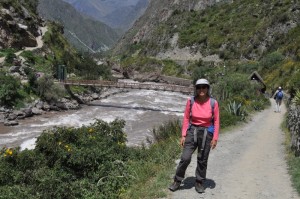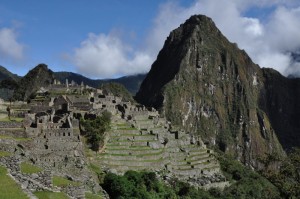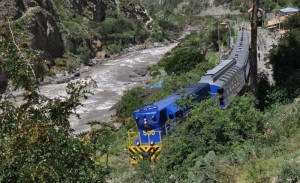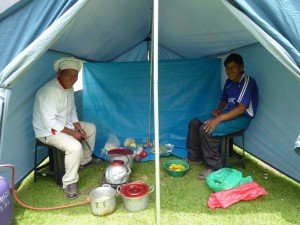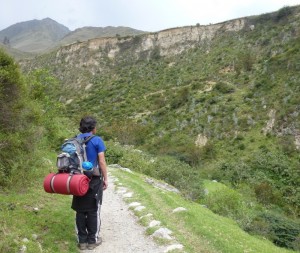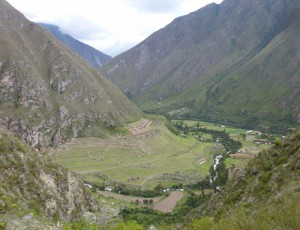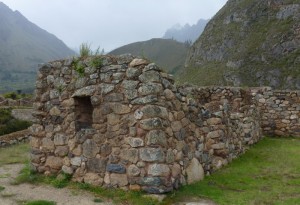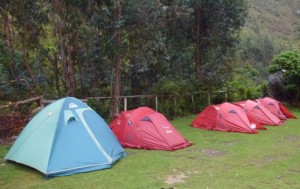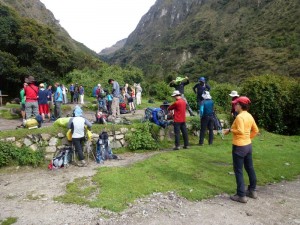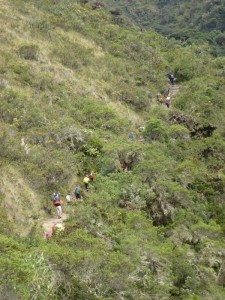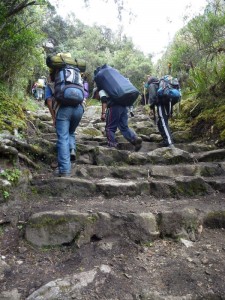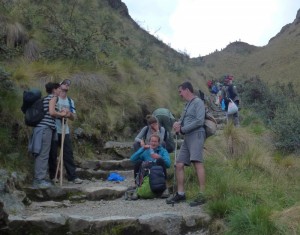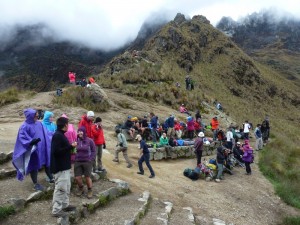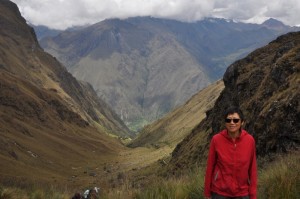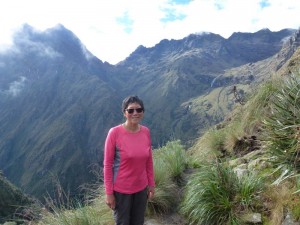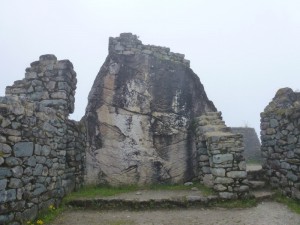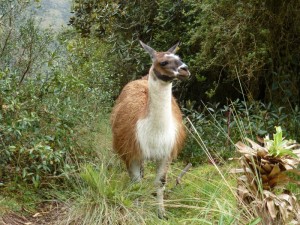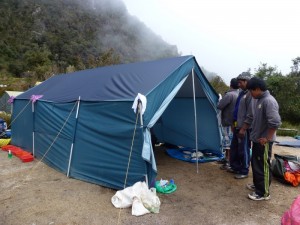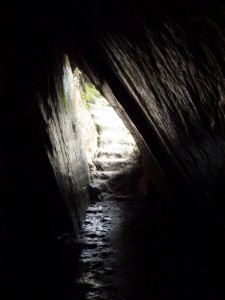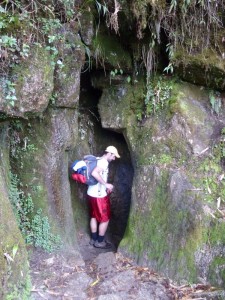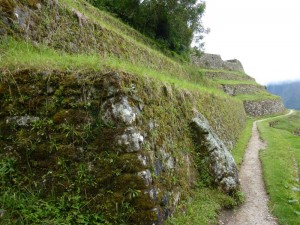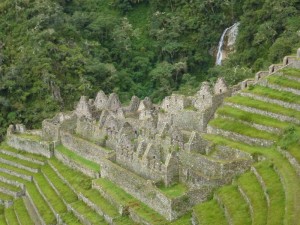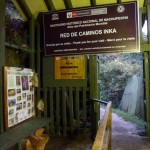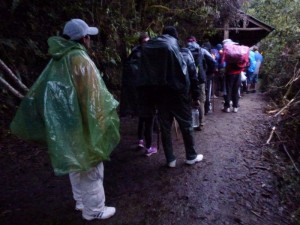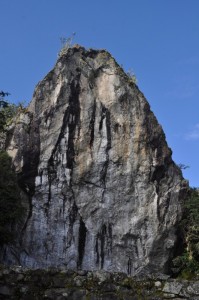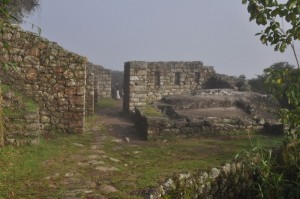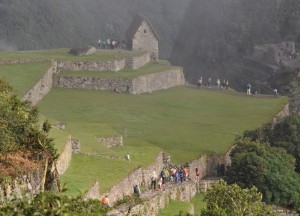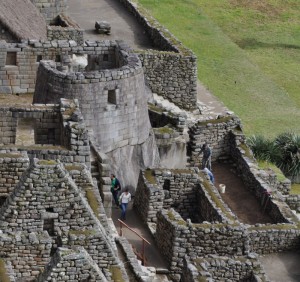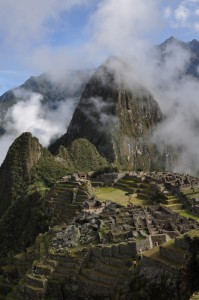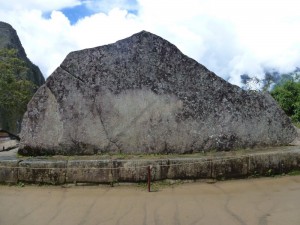Classic Inka Trail March 3 – 6
March 3-6: Classic 4-day Inka Trail (43km)
Machu Picchu voted one of the new Seven Wonders of the World in 2007, is the icon and symbol of the Inka civilization. Situated on a mountain ridge above the Sacred Valley some 80km northwest of Cusco and through which the Urubamba River flows, Machu Picchu was believed to be built around 1450 as an estate for the 9th Inca emperor Pachacuti (1438-1472). But it was somehow abandoned a century later at the time of the Spanish Conquest. Though known locally, it was unknown to the outside world till the American historian Hiram Bingham brought this lost city to world attention.
Machu Picchu was built in the classical Inka style with polished dry-stone walls. Its three primary structures are the Intihuatana (Hitching post of the Sun), the Temple of the Sun and the Room of the Three Windows.
![inca-trail-map[1]](http://www.sarahontheroad.hk/wp-content/uploads/2014/03/inca-trail-map11-300x202.jpg) The Inka Trail, the most famous trek in South America, is considered one of the top 5 treks in the world. The trek beginning at km82 (82km along the railway from Cusco to Aguas Calientes) and goes high up into the mountains passing the Inka ruins at Llactapata, Runkurakay, Sayacmarca, Phuyupatamarca and Wiñay Wayna before finally arriving at Machu Picchu for sunrise on the 4th day of the trek. It has beautiful mountain scenery, lush cloud-forest, subtropical jungles and stunning Inka paving stones, ruins and tunnels. Reaching Sun Gate for sunrise and catching the first glimpse of the misty ruins of Machu Picchu, the “Lost City of the Inkas” and the surrounding mountains is magical and awesome. The final descend from the Sun Gate to the dramatic and photogenic Machu Picchu following the footsteps of Inkas is most memorable and rewarding for the hard climb.
The Inka Trail, the most famous trek in South America, is considered one of the top 5 treks in the world. The trek beginning at km82 (82km along the railway from Cusco to Aguas Calientes) and goes high up into the mountains passing the Inka ruins at Llactapata, Runkurakay, Sayacmarca, Phuyupatamarca and Wiñay Wayna before finally arriving at Machu Picchu for sunrise on the 4th day of the trek. It has beautiful mountain scenery, lush cloud-forest, subtropical jungles and stunning Inka paving stones, ruins and tunnels. Reaching Sun Gate for sunrise and catching the first glimpse of the misty ruins of Machu Picchu, the “Lost City of the Inkas” and the surrounding mountains is magical and awesome. The final descend from the Sun Gate to the dramatic and photogenic Machu Picchu following the footsteps of Inkas is most memorable and rewarding for the hard climb.
Day 1: Piskacucho (2650m) – Wayllabamba (3100m) 10am-4pm (12 km)
I had to get up at 5am in order to take a minibus at 5:45am. There were six other trekkers including four young Scandinavian girls, a Dutch and an Australian. We were divided into two groups: the 20+ group consisting of the four girls and the Dutch guy with one guide. I was at the elderly group with the Aussie trekker with Alex as our guide.
The Inca Trail begins at Piskacucho where permits for the trail were checked. I crossed the Urubamba River and walked on the left hand side of the river.
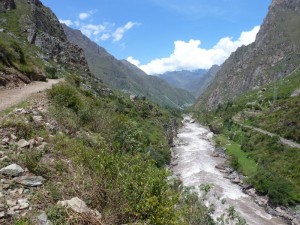 |
|
We had lunch in a tent at Mismay. The food was fantastic with starter, soup and a main course with trout, salad, rice and potatoes.
After lunch, we walked up a ridge before reaching an Inka ruins. It started to rain. Now we entered the Kusichaca Stream Valley. The walk is easy. I reached the first camp site at Wayllabamba (the last community on the Inca Trail) at 4pm.
It was the raining season and not the best season to trek. It started to rain heavily once I settled in my tent. At 5pm, we had tea followed by dinner at 7pm. The dinner was delicious with beef and plenty of cooked vegetables. It was amazing to have banana cooked in rum for dessert. I had a good sleep as I was too tired.
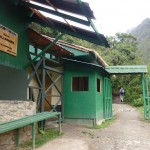 Day 2: Wayllabamba – Dead Woman’s Pass (First Pass) (4200m) – Paqaymayu (3500m) 6:30am-1:30pm (7km)
Day 2: Wayllabamba – Dead Woman’s Pass (First Pass) (4200m) – Paqaymayu (3500m) 6:30am-1:30pm (7km)
I was woken up at 5am, had a sumptuous breakfast with apple and quinoa porridge, bread and fruit. Today, we would pass the highest point on this trail. It is a steady and long uphill walk with a long queue line of trekkers and porters.
It was a lovely and sunny day which made the hike easier. It is a challenging hike and I stopped a dozen times to catch my breath. It was noon when I reached the Dead Woman’s Pass. After that, it was all downhill walk to the campsite which is the largest one on the Inka Trail.
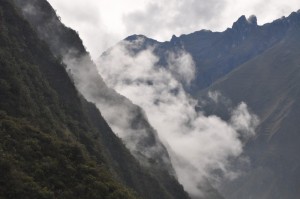 |
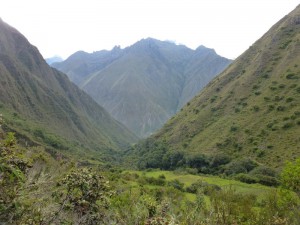 |
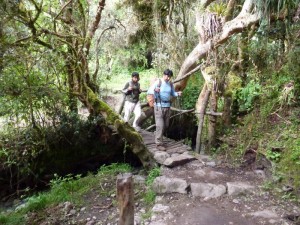 |
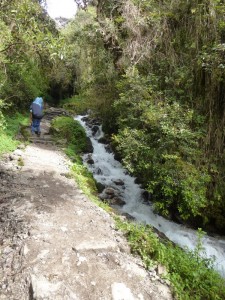 |
The Inka Trail allows 500 people a day including trekkers, guides and porters. There must be several hundreds of people in this campsite giving it a festive atmosphere. It was hot and I even took a freezing cold shower as I could not stand the unpleasant sweaty smell.
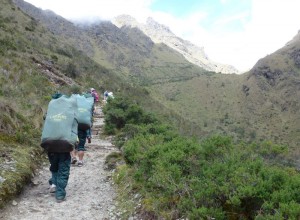 |
|
We had lunch at the campsite. I had a peaceful and restful afternoon doing nothing. Then it started to rain before tea with heavy downpour while we had dinner. After an early dinner, I retired to my tent. But I did not sleep well tonight, possibly as I was not too tired.
Day 3: Paqaymayu – Qochapata (Second Pass) (3950m)- Third Pass (3670m) – Wiñaywayna (2700m) 6:30am – 4pm (15km)
The weather was fine when we set off at 6:30am. After climbing for 40 minutes, I arrived at Runkurakay (3800m) which is a semi – round structure used for observing winter solstice.
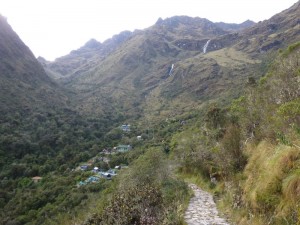 |
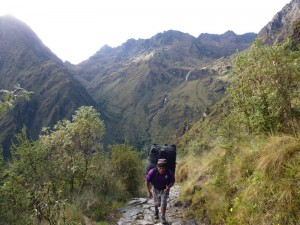 |
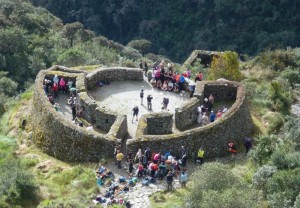 |
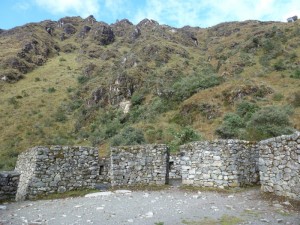 |
After another hour’s walk uphill, we reached the Second Pass. Unfortunately, it became misty with low visibility.
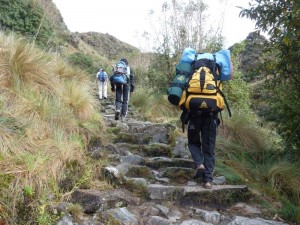 |
 |
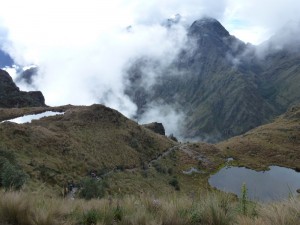 |
After a short downhill walk, we arrived at a well preserved Inka town Sayaqmarka (3600m). It was very misty but atmospheric.
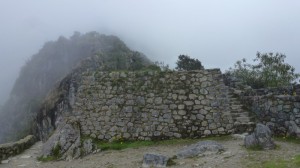 |
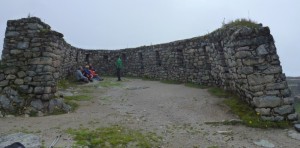 |
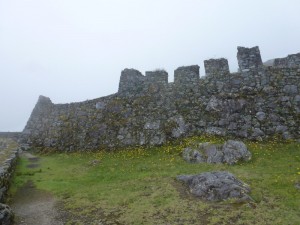 |
|
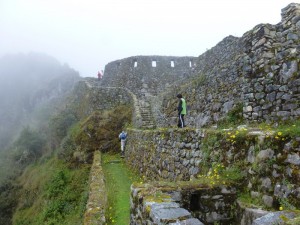 |
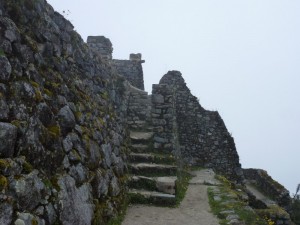 |
We had an early lunch at 11am at Chaquiqocha (3680m). It began to rain when we had lunch in our tent.
It rained intermittently throughout the afternoon. It was so misty at the Third Pass that I hardly saw anything. Then I had a scaring time walking downhill to the campsite. Despite my caution, I fell once as my right knee suddenly gave way. It’s a frightening experience: I fear I might fall anytime without notice.
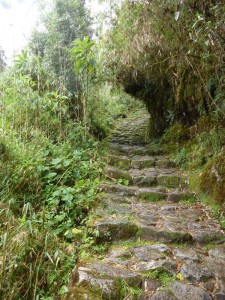 |
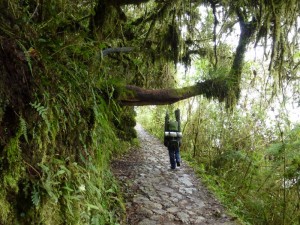 |
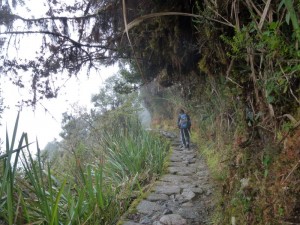 |
The third camp site is not good. But there are two fantastic ruins (Intipata & Wiñaywayna) nearby with extensive terraced fields. I enjoyed strolling around them before dinner. It rained heavily throughout the night and I had a sleepless night.
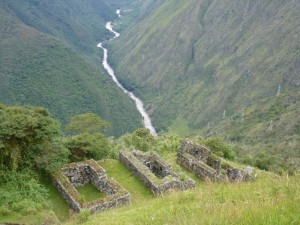 |
|
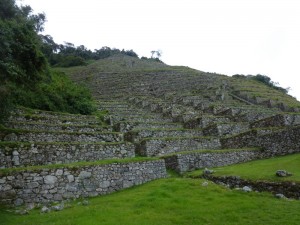 |
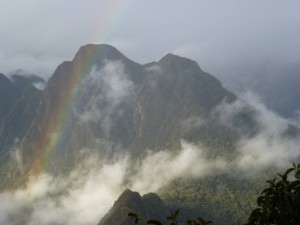 |
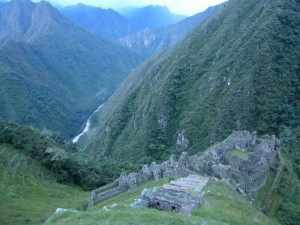 |
|
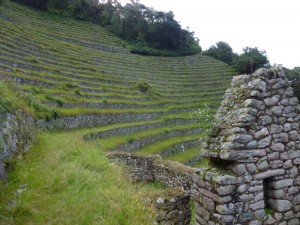 |
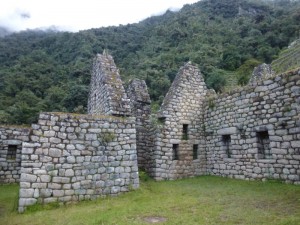 |
Day 4: Wiñaywayna – Machu Picchu (2400m) – Wayna Picchu (2750m) 5:30am – 2:30pm (10km)
Today, we were supposed to get up at 3:30am, leave the campsite at 4am and queue up at the check point for an hour and a half. The gate opens at 5:30am. Such arrangements are made solely because the porters have to pack up before 4am in order to catch a special train with cheaper fares for them to return to Cusco. The 20+ group considered it a new experience and happily went along with the plan. But the 60+ group found the idea ridiculous and unreasonable. As a result, Alex our guide made special arrangements and had a porter stay behind to take the tents and our bags at 5:30am while the rest of the group departed for the check point at 4am. I was the last one to go through the check point at 5:50am.
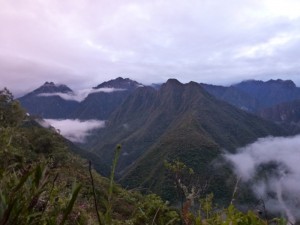 |
|
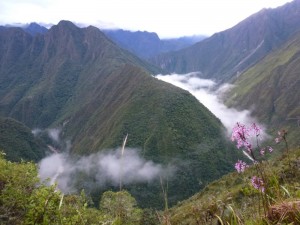 |
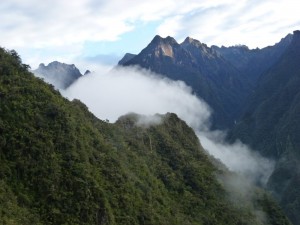 |
I took an hour to reach the Sun Gate. The climb is steep at some places. The views of the Urumbamba River, the gorges, clouds and mists at dawn were most impressive and atmospheric.
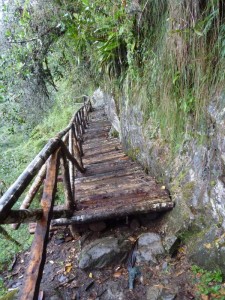 |
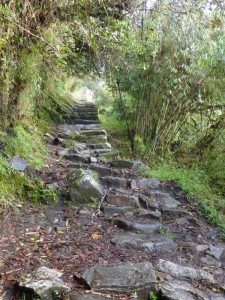 |
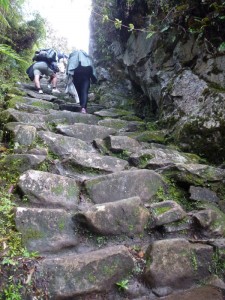 |
There must be over a hundred people hanging out at the Sun Gate waiting anxiously for the first sunray to lighting up Machu Picchu and Wayna Picchu and the mountain ranges afar. We had not been disappointed.At 7am, the lights fell on the terraces of Machu Picchu. It was like paradise: snow-cladded peaks at the far end, Machu Picchu in the middle with Wayna Picchu half visible through the mist!
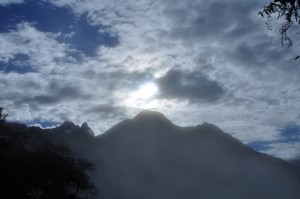 |
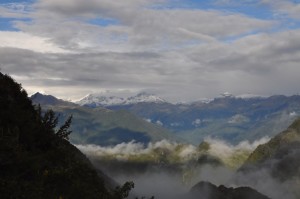 |
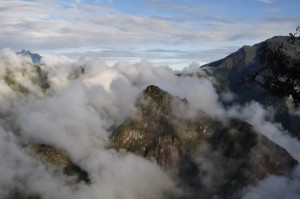 |
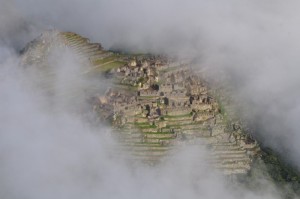 |
The walk downhill to Machu Picchu was relatively easy. I took my time walking slowly and enjoying the awesome scenery.
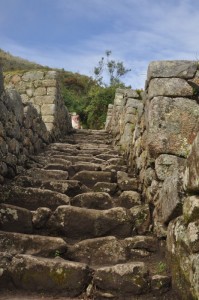 |
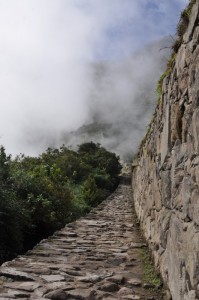 |
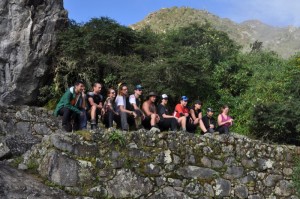 |
|
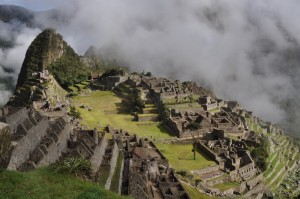 |
Alex explained the history and construction of Machu Picchu before leaving for Cusco around 10:15am.
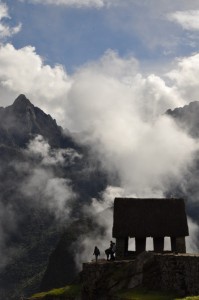 |
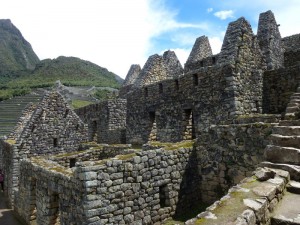 |
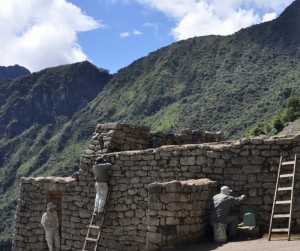 |
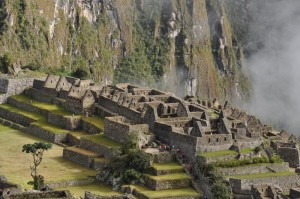 |
 |
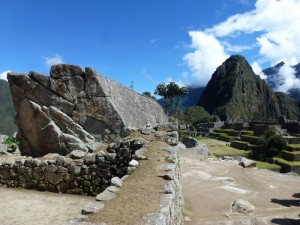 |
Sam made a day trip to Machu Picchu in order to accompany me and the Aussie trekker to climb Wayna Picchu. We started at 10:50am and took 45 minutes to climb 300m to reach the top. What a hard and scary climb as the rocks are wet and slippery. The Inka steps are narrow and steep. Sam awarded us with a beer at the top of Wayna Picchu.
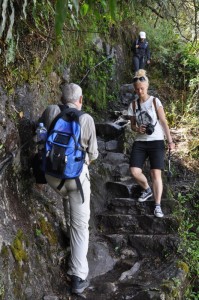 |
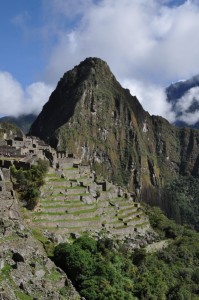 |
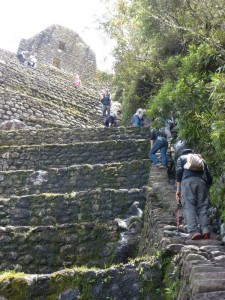 |
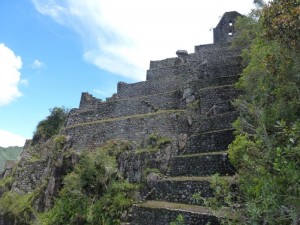 |
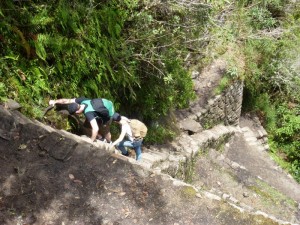 |
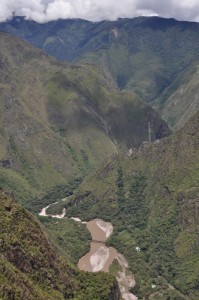 |
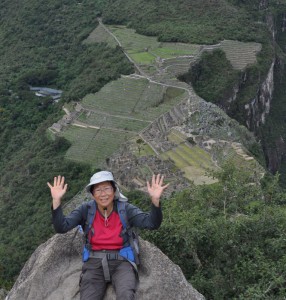 |
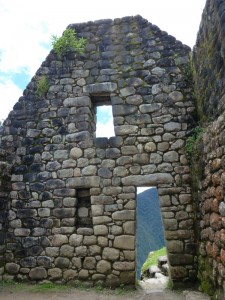 |
It began to rain and the park ranger told us to descend without delay. I landed safely at the starting point at 1:30pm. We took a bus to Aguas Calientes (the town nearest to Machu Picchu) at 2:30 pm. I had a nice lamb dish, a beer and a tea for almost S60. It is the most expensive though ordinary meal I had in Peru.
There must be hundreds of souvenir stalls and eateries in Aguas Calientes which has changed beyond recognition. I miss the calm and sleepy town I once spent a night with Lillian in 1988. I took the 6:45pm tourist train to Ollantaytambo and then a minibus to Cusco. I arrived at Amerinka Hotel by the Plaza San Francisco at 10:15pm. I was exhausted. By the time I got everything sorted out, it was almost 1am before my head hit the pillow.
Remarks
I have finally done the Inka Trail including climbing Wayna Picchu! I will always remember this memorable trek.
First, it is an achievement given my knee problem and the dog bite which deep wound was yet to be healed. I had been looking up at the endless irregular steps with anguish. The narrow small steps in Wayna Picchu almost killed me! The slippery trail is dangerous and I am glad that I had only fallen once.
Second, it was the wet season and not the best time for trekking. The relentless rain had added additional challenge. But I was grateful that the weather had been kind to me: it rained everyday but normally after the hike in the late afternoon and evening. The last day in Machu Picchu was perfect with blue sky and fine weather. I could not have asked for more!
Third, the Inka Trail is legendary and rich in history. The scenery for the first three days by my standards. But the sight of Machu Picchu and the surrounding lush green and snow-cladded mountains around 7am is miraculous and unearthly beautiful. The history of the trail and the impressive Inka ruins along the trail with awesome masonry works and architecture have made this World Heritage Site unique and most unforgettable for any visitor.
Fourth, thousands of visitors come to see this awesome site every day. It is well-preserved and managed. But the charge is unfair: I paid S250 for the trail including entrance fee to Machu Picchu and had to pay another S150 for Machu Picchu and the Wayna Picchu. Why do I have to pay twice for Machu Picchu?
Fifth, Cusco is now thriving on tourism with thousands of people are engaged in the industry. The trekking company I used has provided a good service. The quality of food has far exceeded my expectation! But the practice of requiring trekkers to get up at 3am on the last day in order to enable the porters to pack up and take an early train back is insane. It is ridiculous to require trekkers to queue outside the check point at 4am for an hour and a half. The agent told me that the train company would only provide a cheap ride for porters on the earliest train. Is this an acceptable excuse?
Lastly, I miss the old days in Machu Picchu and Aquas Calientes. When Lillian and I first found our way there with a backpacker group in 1988, things were cheap and life was simple and calm. Today, Machu Picchu is the magnet drawing hundreds and thousands of overseas tourists a day. It is also a money spinner for Peru: a train ride from Ollantaytambo to Aquas Calientes costs US$50, a bus ride to Machu Picchu US$9, entrance fee to Machu Picchu and Wayna Picchu US$60 and a simple meal in Aquas Calientes US$20. Machu Picchu is still magical but I find the nostalgic and mystical Machu Picchu more mesmerizing and memorable.


